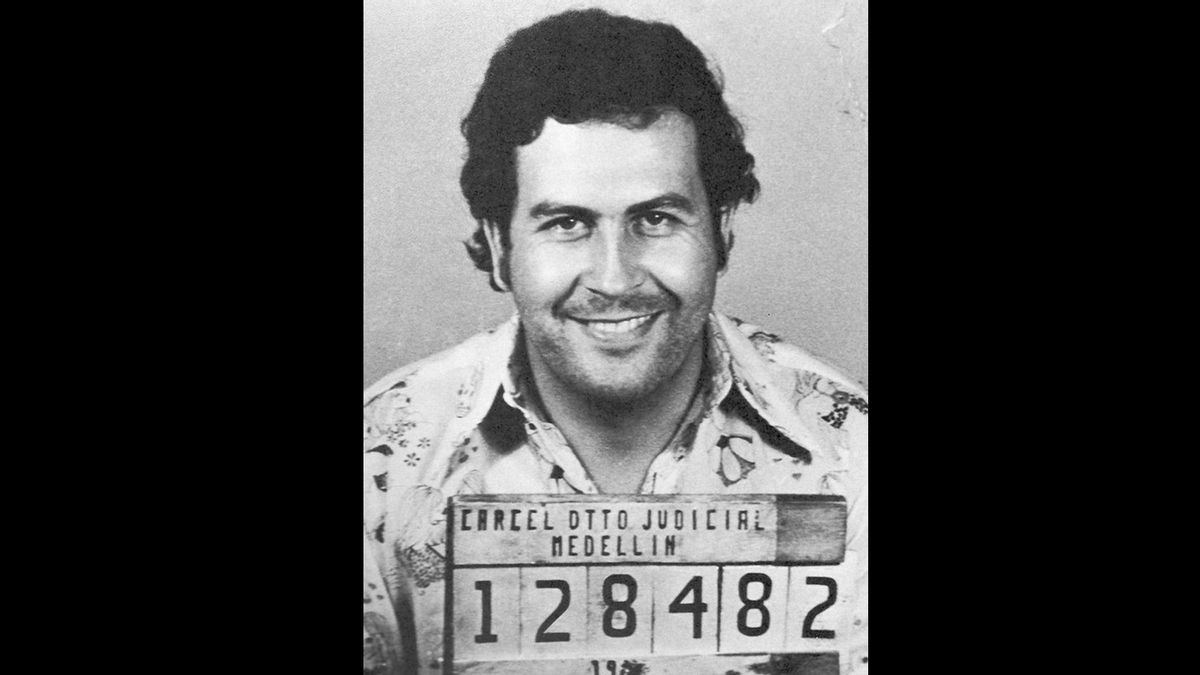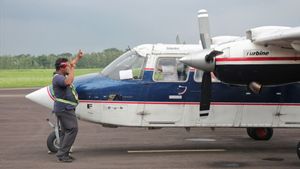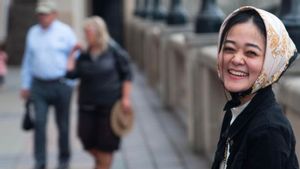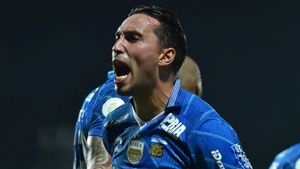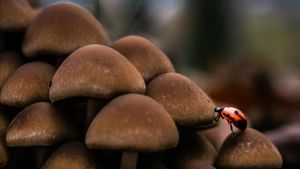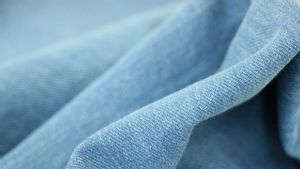JAKARTA - Pablo Escobar is a trending topic on Twitter. The cause is a viral video about drug smuggling in Mojokerto Class IIB Prison, East Java. The video shows an incident in early January 2020, where a man smuggled coplo pills through lodeh vegetables. Pablo was known to be crazy. Even with the smuggling stories.
No player in the drug industry has more brilliance than Pablo. Few drug kingpins can possibly match the violence and other crimes surrounding Pablo's drug business. However, Pablo was still one of the most violent. Quoted from ABS-CBN, Pablo was responsible for the murder of 60 thousand judges, lawyers, police, and many civilians.
And the question of how Pablo distributes its business products, particularly cocaine, is a privilege. With the Medellin Cartel, Pablo was king of the dead. In the skies, Pablo was the most experienced explorer. In the ocean, he is the ruler. Throughout his career, Pablo has shipped tonnes of cocaine from Colombia to the United States (US) and generated US $ 9-30 billion.
Pablo and his cartel were said to be responsible for 80 percent of cocaine trafficking in the US during the 1970s and early 1980s. Pablo, behind the crime, kept the majesty, making it big, even in many popular works, from literature to film to television. Not without reason, however, Pablo is played by actors like Benicio del Toro, Andres Parra, Cliff Curtis or Wagner Moura who plays for the popular Netflix series, Narcos.
Pablo's planesPablo's first shipment of cocaine to the US in 1970 was made in a small aircraft, the Piper PA-18 Super Cub. He used this aircraft throughout the early years of his career. Designed and manufactured by Piper Aircraft, the Piper PA-18 Super Cub is a lightweight utility aircraft. This monoplane, two-seat, single-engine aircraft is widely used to raise banners to military training aircraft.
The PA-18 Super Cub is supported by a powerful 150 horsepower engine, combined with a high-lift wing. This aircraft has the capability of taking off and landing at a distance of up to 300 feet. So short, it makes the PA-18 Super Cub ideal for heavy plane flights. The PA-18 Super Cub is often seen flying in bush or wilderness areas, such as the savanna in Africa or the jungles of South America.

In later times, Pablo used the Cessna aircraft. Manufactured by the Cessna Aircraft Company, it is a civilian utility aircraft, which means much more than the PA-18 Super Cub. The Cessna is powered by a 180 to 210 horsepower engine, as well as additional fuel capacity. Its comparative weight allows the Cessna to fly up to 801 miles or 1,289 kilometers. The aircraft is ideal for border patrol and recreational aviation. For the drug business, Cessna is almost perfect for smuggling.
Cessna then became an important part of Pablo's drug operation, in addition to Carlos Lehder Rivas and George "El Americano" Jung, two of his colleagues. Pablo met the two in the mid-1970s. At that time Pablo began to fly Cessna with his own supply of cocaine to the United States. Meanwhile, Lehder and George 'secured the route'. Lehder is known to have strong connections with the Medellin cartel, which was then nascent. Dan George, has a network in the US.
The first shipment with Cessna took place in 1977. Pablo was carrying 250 kilograms of cocaine at a value of 15 US dollars. In 1978, Lehder and George spent most of their weekend flying from the Bahamas to Escobar's ranch in Colombia. The two go back and forth to take cocaine. Sometimes 300 kilograms, sometimes 500 kilograms. From the Bahamas, the cocaine was distributed throughout the United States.
[/ read_more]
Cocaine submarines
Another world that Pablo explored was the ocean. In the very minimum information, Pablo is said to have used two remote-controlled submarines.
The submarine is said to have gotten Pablo from the Russian Navy. Each of the submarines is capable of carrying one tonne of cocaine.
Pablo used the submarines towards the end of his life, where over time they evolved, increasing his supply capability to a greater extent. In its most recent version, the Pablo cocaine submarine is said to be able to carry up to seven kilograms of cocaine.
These submarines are said not to be completely submerged. The submarine moves beneath the surface of the water, with the cockpit and exhaust pipes poking between the ocean waves.
This allowed Pablo's cocaine submarine to launch in an almost imperceptible trail. It is said that the Pablo cocaine submarine was made of wood and fiberglass. This material is believed to be one of the factors that made the Pablo cocaine submarine difficult to track by radar.
Special laboratory: from cocaine to moneyBack to Pablo's air operations. One of the most interesting things is the state-of-the-art laboratory on a farm on the Venezuelan border. Pablo's brother, Roberto Escobar, in the book The Accountant's Story tells that the laboratory employed about 200 people. They live and work in a house built on small wheels.
When a plane is about to land, the house is moved to make way for the plane to enter a runway under the laboratory. After the plane takes off, the laboratory will return to its original position.
[/ read_more]

That laboratory and others are said to produce five thousand kilograms of cocaine every week. Pablo himself spent two thousand US dollars processing every kilo of coke. Following the process, Pablo would sell the cocaine to Lehder and George for 22 thousand US dollars.
Then, Lehder and George will sell the cocaine to middle-class dealers for 60 thousand US dollars. With that calculation, for every 400 kilo load, Pablo will get a profit of 8 million US dollars. Meanwhile, Lehder and George got 5 million US dollars.
In those days - after Pablo, Lehder, and George were independent, flying cocaine to the United States - they paid hired pilots a fee of 400,000 US dollars for each operation.
About Pablo EscobarPablo Emilio Escobar Gaviria was born in Rionegro, Colombia on December 1, 1949. Pablo died December 2, 1993 in Medellin. Head of the Medellin cartel, Pablo became the largest drug dealer in the world. Starting a business in the 70s, Pablo's greatness lasted until the late 90's, with the peak of his greatness being reached in the 1980s.
Quoted by Britannica, Pablo was born to a father who was a farmer and a mother who was a school teacher. Pablo's criminal life began as a teenager. In those days Pablo was selling fake diplomas, smuggling in stereo equipment and stealing gravestones to resell. Pablo also stole a car, which was the first time he was arrested in 1974.
At that time Pablo had started his drug business. He started the business by helping to found the Medellin cartel. Pablo's best-known partners in the cartel were the Ochoa Brothers, which consisted of Juan David, Jorge Luis and Fabio. In the Medellin cartel, Pablo served as head of the organization. He takes care of many things, from the production and transportation to the sale of cocaine.
[/ read_more]

In the 1980s, the Medellin cartel dominated the cocaine trade. Escobar held power with immense wealth. According to some reports, Pablo's fortune was at US $ 25 billion. He also owns a 2,800-hectare plantation called Hacienda Napoles in Colombia.
He built the land, filling it with soccer fields, dinosaur statues, to artificial lakes and a zoo that houses giraffes, hippos and camels. On the other hand, Pablo was known as a hero. He funded many projects to help poor people, bringing him to the side of the fairy tale legend, Robin Hood. That perception helped Pablo win the election for a replacement seat in the Colombian Congress in 1982.
Pablo's philanthropic image was matched by his notorious cruelty. Apart from drugs, Pablo is often involved in cases of bribery to murder. Pablo killed many people from his rival cartel, the Cali cartel. Pablo also killed many government officials, police, and civilians.
BERNAS Others[/ read_more]
The English, Chinese, Japanese, Arabic, and French versions are automatically generated by the AI. So there may still be inaccuracies in translating, please always see Indonesian as our main language. (system supported by DigitalSiber.id)
